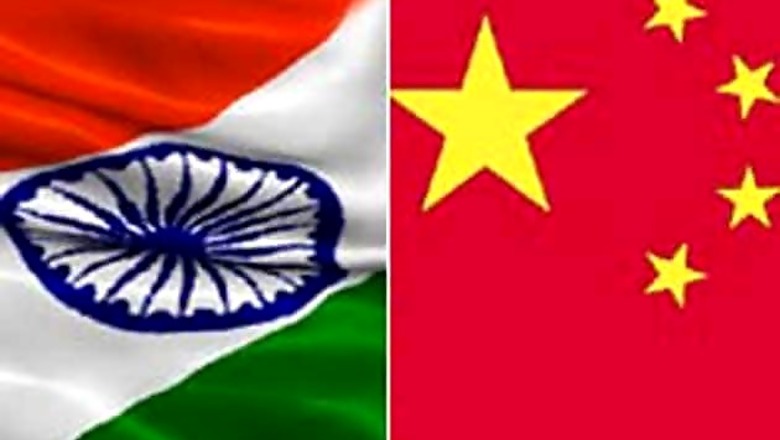
views
History is central to all nationalist mythos. This is especially true for China, whose perceptions of its past substantially contribute to its conduct in the present and to its belief in the inevitability of its emergence as a super power. And in this context, Western scholars over the last 300 years have by design or otherwise done a lot to create the image of a Sino-centric world for much of human history. A typical example of this is Martin Jacques' 2009 book 'When China Rules the World', which starts with the argument of the Chinese centrality in history, and predicts the revival of that centrality in the near future.
Similarly, Henry Kissinger, the past master of realpolitik and diplomacy, also presents a rather sentimental view of the same narrative in his 2011 book 'On China', when he notes:
Other societies, the United States included, have claimed universal applicability for their values and institutions. Still, none equals China in persisting - and persuading its neighbours to acquiesce - in such an elevated conception of its world role for so long, and in the face of so many historical vicissitudes. From the emergence of China as a unified state in the third century BC until the collapse of the Qing dynasty in 1912, China stood at the center of an East Asian international system of remarkable durability.
The crucial mistake that Kissinger commits here is to imagine that East Asia, where China was indeed the central presence, as being at the heart of the world or of the 'international system'. One need not be surprised, however, if the architect of US-China alliance, which is a principal factor behind the current rise of China, errs on the side of the 'Middle Kingdom'.
Contrary to what Kissinger claims, it is the world of the Indian Ocean, with East Asia and West Asia-East Africa as its twin extremes, which was the heart of the world economy and of the international system for two millennia. And both India and China had a pre-eminent economic presence in this Indian Ocean world.
However, it was India which was geographically central to the Indian Ocean. This was clearly acknowledged in the ancient world as is reflected in the fact that more than 1200 years ago Arab traders and geographers used to call this ocean 'Bahr-e-Hind', which is from where the present term, the Indian Ocean, is derived.
The world was therefore never Sino-centric. Far from being the greatest power on earth which it is claimed to have been for 2,000 years, China was for most of its history a civilization that though large and advanced in comparison with most other parts of the world with the exception of India of course, was too isolated and self-centered to be able or willing to exert power over others. Indeed, power becomes power only in the process of engagement with others.
One of the most important reasons behind China's self-engrossment was that for most of its history it had to contend with Central Asian nomads, who kept invading China intermittently, and even ruled over it, as in the case of Yuan Empire of the Mongols built by the famed Kublai Khan. It is only by the 17th century that the central Asian threat to China was finally overcome.
The Chinese self-image of being the 'Middle Kingdom' was thus not an outcome of its non-existent world domination, but of being at the center of the East Asian world and being surrounded by a host of smaller countries that naturally accepted the hegemonic position of China. In fact, even within East Asia, Japan remained a largely independent civilization and power for most of its history.
The 'tribute system' primarily involved the many smaller countries of East Asia, for whom it was simply a practical means of doing trade and conducting other business with China. Great civilizations and empires of the ancient and medieval world were neither a part of this 'tribute system' nor did they acknowledge China as the 'Middle Kingdom'.
The political disunity in Indian history is often contrasted with supposed Chinese unity. Nothing could be more disingenuous than this. Like other great civilizations, China too has witnessed a good deal of disunity and fragmentation in its history. In the last 2,500 years, China has been united for no more than a total of 1100 years, and even during these periods, the Chinese State generally covered only the eastern and southern parts of what is the present-day People's Republic of China, which constitute the core area of the Chinese civilization. Interestingly enough, it is only the foreign-origin dynasties, the Yuan/Mongols (1279-1368) and the Manchu/Qing (1644-1912) which conquered and ruled over China as it is today.
India has also witnessed the rise and fall of many empires and dynasties in the long and eventful course of its history. In the last 2,500 years, it has had a united empire for at least 900 years cumulatively. Just like China, most of these empires covered only the core area of the Indian Sub-continent; it is only the British and Mauryan empires that easily covered more than four-fifths of the Sub-continent.
The State in Chinese history has admittedly been more centralized, bureaucratic, and powerful than in India. But this is hardly a strongpoint for China. Indian society has been far more organized and stable compared to the Chinese, precluding the need for such a State in India. What is important is that the State in India was derived from the needs of our society, and was able to perform its functions effectively most of the time.
The so called disunity of India in history is largely a product of the Eurocentric writing of history in the last 200 years. For the British, it was important to emphasise how their rule was a boon for Indians who, they claimed, had generally been disunited, lacked a tradition of statecraft, and rarely had a united State. The more strident among the British writers such as the Utilitarian led by James Mill went to the shameful extent of asserting that India had no history at all, and that it had never been an advanced civilization.
Though Indian history writing has come a long way, and Indian as well as foreign historians of the last hundred years have demolished most myths created by imperialist scholars, the myth of India's political disunity vis a vis other comparable countries remains an abiding one. This considerably distorts the way India sees itself and how it is seen by others, including China. The sooner this distortion is corrected, the better it is.
Just as in the case of India, China's historical narrative is very substantially a product of Western knowledge and imagination, though it has worked to the advantage of China. The Roman Empire and later day European countries rarely had any real knowledge of or contact with China for most of human history. The links they did have were of the most indirect and tenuous kind. In this bliss of ignorance about a distant and largely isolated civilization, fascination, romanticisation, and mythification of China was their frequent recourse. The account of the Italian merchant and traveler Marco Polo who supposedly visited the court of Kublai Khan in the late 13th century is a typical example of the old European images of China.
The 18th century can justifiably be called a formative period in world history, for it is during this period that the West came to gain ascendancy over large parts of Asia, consolidated its power in the North and South Americas, and was able to start the Industrial Revolution which over the first half of the 19th century helped establish Western hegemony over the world.
Much of the myth-making in history goes back to this period, and works to India's disadvantage and China's advantage. The European travelers, writers, intellectuals, and traders contrasted the apparent disunity and chaos of India after the decline of the Mughal Empire in the 18th century with the unity and order of the Qing Empire in China.
Not that it always remained so. The Europeans oscillated wildly between declaring China a great civilization and a backward and stagnant one. Thus Leibniz, Voltaire, and Rousseau had favorable opinions about China, while Goethe and Herder held rather dismissive views about it. In the early 19th century, the great German philosopher Hegel went to the extent of saying that 'China was like a dead star whose light was spent forever'. This was in stark contrast with Napoleon's description of China as a 'sleeping giant', which 'will move the world' when it wakes up, a description that was repeated by many other Europeans.
Even after the British success in the first Opium War (1839-42) leading to the forced opening of China and European occupation of many of its parts, European assessments of China continued to swing between the two extremes. And by this time, even China had started thinking in the same manner, as has been corroborated by David Scott in his book China and the International System (1840-1949): Power, Presence and Perceptions in a Century of Humiliation. Thus Chinese perceptions about their own history and future were deeply influenced by European assessments, and continue to be so. These highly selective and distorted views of China's past call for correction.
The truth of history is very different. Both India and China were among the great civilizations of the world. India was no less than China in material advancement and cultural development. This was first established by the Belgian scholar Paul Bairoch, one of the two great economic historians of the last 70 years, who concluded that in 1750 India accounted for about 25 percent of the world GDP and China about 33 percent. Bairoch's study was followed up by a much more comprehensive research of Angus Maddison, the other great economic historian of the last 70 years, about the world economy in the last 2,000 years.
And his findings are even more interesting. According to Maddison, around the beginning of the Common Era, India accounted for 33 percent of the world economy, and China about 25 percent. Circa AD 1000, India and China still had roughly the same shares, i.e. 33 percent and 25 percent each. By AD 1500, India's share had come down mainly because of the rise of European share, so that both India and China contributed roughly 24 percent each to the world GDP, with China marginally ahead. By AD 1600, China had overtaken India, with about 28 percent of the world GDP against India's 22. However, by 1700 India had again overtaken China now having around 24 percent of the world GDP against China's 22.
The British conquest of Bengal and gradually other parts of India created a huge gap between India and China over the next century or so, as it caused unprecedented damage to both population and economy. By 1820, the figures were around 17 percent for India and 33 for China. While making a historical comparison between the two countries, people often take only this last cut-off date, and come to an erroneous conclusion, since by this time the Indian economy had already suffered incalculable damage first under British mercantilism and later because of the rise of the Industrial Revolution in England, which would have scarcely been possible without the resources and markets provided by India.
Now these figures are not meant to be taken too strictly. What they do indicate, however, is that both India and China were central to the world economy in history, and that neither the one nor the other could claim primacy for itself.
What is true of economy was also true of the demography of the two countries. For most of the last 2000 years, India had a larger population than China. Again, as late as 1700, its population exceeded that of China, which overtook India by 1820 mainly because of the decline of India's population under the British rule. Population was more important in the pre-modern world than it is today, because it was reflective of the greater productivity and economic development of a country.
We should, therefore, not be surprised that India is again poised to overtake China in terms of population, since it is in tandem with a long-term historical trend. Indeed, India along with Pakistan and Bangladesh, i.e. the undivided India, has already overtaken China.
It is important to debunk the myths of history, because in a very large measure China's sense of entitlement, its manifest destiny of emerging as a super power in the 21st century flow out of Sino-centric accounts of the past. Even the 'century of humiliation' that China keeps highlighting to justify its conduct in the present is rooted in this mythology of the past. Other nations have suffered far worse fates than China in its 'century of humiliation', but scarcely any of them carry the baggage of the past as much as China does.
The truth of the history is that both China and India paid a heavy price for their inability to see the rising tide of European imperialism while there was still time. We know about the dismissive response of the Qing Emperor to the British embassy led by Lord Macartney in 1793. What is less known is that Aurangzeb, who ruled over one of the greatest empires of the world, had betrayed a similar attitude towards English ambassadors regarding them as people of no consequence and their Queen as nothing more than a petty chieftain. The future was to prove both of them wrong.
The subsequent tide of imperialism and colonialism involved massive exploitation and oppression of large parts of the world. Among the biggest victims was indisputably India, which suffered hugely at the hands of the British, who dealt a final blow to it in the form of Partition before granting Independence in 1947. But we have never had any aggressive plan to seek revenge and to correct the historical wrongs by redrawing borders in blood.
China's claims over Taiwan, Tibet, and Sinkiang on the other hand have very little historical justification. Taiwan may have been a part of China during some periods of its history, but it became a separate nation by the will of its people and leaders, and has every right to continue its existence as such, irrespective of Chinese claims.
Just because the Manchus/Qing, who themselves were of foreign origin, had some nominal suzerainty over Tibet does not mean that China's occupation of Tibet since 1951 has any justification whatsoever. The peculiarities of the Qing Empire make any Chinese claims on the basis of its territorial limits meaningless. This is clearly brought out from the following words of William T. Rowe in his famous book China's Last Empire: The Great Qing:
This new Manchu-centered Qing differed fundamentally from most preceding imperial dynasties-and none so dramatically as the Ming-in that it was self-consciously conceived as a universal empire, a multinational polity within which China (the former Ming domain) was simply one component, though quite obviously the most central and economically productive one. The dissociation of the Great Qing empire from the long recurring pattern of imperial Chinese dynasties has led some scholars to insist on seeing 1636 (the year of the Qing's self-proclamation) rather than 1644 (the year of the Qing conquest of the Ming) as the empire's proper founding date.
For China, however, there is no contradiction in professing faith in a 'harmonious world' of Hu Jintao's description, while claiming rights over all territories conquered by the Qing. This Chinese contradiction is aptly summed up by Peter C. Perdue in his book China Marches West: The Qing Conquest of Central Eurasia:
Even though nationalists rejected the Manchus as an obstacle to China's modernization, the Chinese nation-state derived its concept of its ideal boundaries from the maximal expansion of the Qing empire in the eighteenth century. Like other nationalists, the Chinese built on the past they reject.
Almost all the territorial claims of China supposedly deriving their justification from the past exemplify only the age-old dictum of might is right. China claims territorial rights over all lands which in some distant past may have been ruled by foreign-origin dynasties like the Yuan and the Qing which extended over huge landmasses. It is then not a surprise that China has territorial disputes with so many countries, such as India, Japan, Vietnam, and Philippines.
By this utterly flawed and dangerous logic, India can stake a right to many neighboring countries like Sri Lanka and Burma, as these were parts of the British Empire. China's claim over Taiwan is roughly in the same category as would be a hypothetical Indian claim over Pakistan or Bangladesh. China's claim over Sinkiang would be in the same league as a putative Indian claim over Afghanistan, most of which was a part of the Mughal Empire as late as the 18th century.
Whereas history is an important part of nation-building, too much emphasis upon it or an inability to see it in the right perspective can easily lead a country to 'such an elevated conception of its world role' in the past as to make peaceful and harmonious relations with other nations difficult, if not impossible.
Ravi K. Mishra is a professional historian and contemporary scholar of Asian affairs. He can be reached at [email protected]




















Comments
0 comment